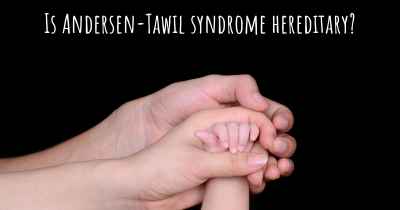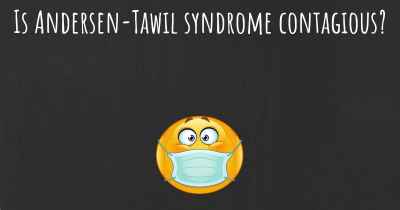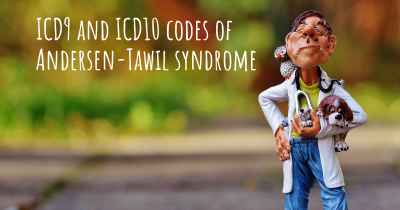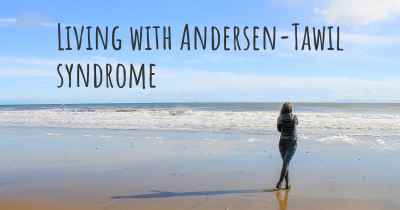Which are the causes of Andersen-Tawil syndrome?
See some of the causes of Andersen-Tawil syndrome according to people who have experience in Andersen-Tawil syndrome
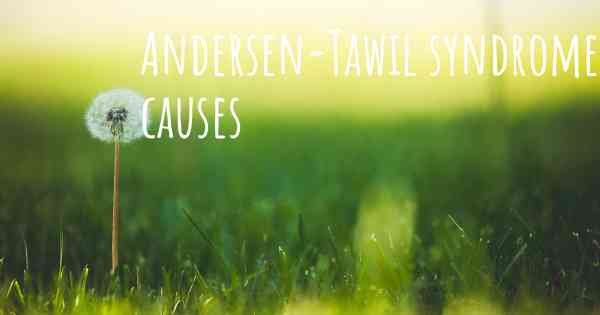
Andersen-Tawil syndrome (ATS), also known as long QT syndrome type 7 (LQT7), is a rare genetic disorder that affects multiple systems in the body. It is characterized by a triad of symptoms including periodic paralysis, cardiac arrhythmias, and distinctive facial features. ATS is caused by mutations in the KCNJ2 gene, which encodes for a protein called inward rectifier potassium channel 2 (Kir2.1).
Genetic Mutations: The primary cause of Andersen-Tawil syndrome is genetic mutations in the KCNJ2 gene. These mutations can be inherited in an autosomal dominant manner, meaning that a person only needs to inherit one copy of the mutated gene from either parent to develop the condition. However, in some cases, ATS can also occur sporadically, without a family history of the disorder.
KCNJ2 Gene: The KCNJ2 gene provides instructions for the production of the Kir2.1 protein, which is responsible for regulating the flow of potassium ions across cell membranes. This protein plays a crucial role in maintaining the electrical stability of cells in various tissues, including the heart, skeletal muscles, and certain regions of the brain. Mutations in the KCNJ2 gene disrupt the normal functioning of Kir2.1 channels, leading to the characteristic symptoms of ATS.
Cardiac Arrhythmias: One of the hallmark features of Andersen-Tawil syndrome is the presence of cardiac arrhythmias. The abnormal potassium channel function caused by KCNJ2 mutations can lead to an imbalance in the electrical signals that regulate the heartbeat. This can result in episodes of irregular heart rhythms, such as ventricular tachycardia, ventricular fibrillation, or prolonged QT intervals on an electrocardiogram (ECG). These arrhythmias can increase the risk of fainting, seizures, and sudden cardiac arrest.
Periodic Paralysis: Another significant symptom of ATS is periodic paralysis, which is characterized by episodes of muscle weakness or temporary paralysis. These episodes can affect various muscle groups, including those in the arms, legs, face, and trunk. The weakness typically occurs during rest or after exercise and can last from minutes to hours. The exact mechanisms underlying periodic paralysis in ATS are not fully understood, but it is believed to be related to abnormal potassium channel activity in skeletal muscles.
Distinctive Facial Features: Individuals with Andersen-Tawil syndrome often exhibit distinctive facial features, although these can vary in severity. These features may include a small lower jaw (micrognathia), a high-arched palate, widely spaced eyes (hypertelorism), low-set ears, and a small chin. These facial characteristics are not specific to ATS and can be found in other genetic conditions as well.
Other Possible Factors: While the primary cause of ATS is genetic mutations in the KCNJ2 gene, there may be other factors that influence the severity and presentation of the syndrome. It is believed that additional genetic and environmental factors may contribute to the variability in symptoms observed among individuals with ATS. However, further research is needed to fully understand these potential factors.
In conclusion, Andersen-Tawil syndrome is primarily caused by mutations in the KCNJ2 gene, which disrupt the normal functioning of the Kir2.1 potassium channels. This leads to a range of symptoms, including cardiac arrhythmias, periodic paralysis, and distinctive facial features. The understanding of ATS is still evolving, and ongoing research aims to uncover additional factors that may influence the development and progression of this rare genetic disorder.


